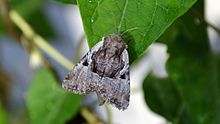
The Carolina Panthers are a professional American football team based in Charlotte, North Carolina. The Panthers compete in the National Football League (NFL), as a member club of the league's National Football Conference (NFC) South division. The team is headquartered in Bank of America Stadium in Uptown Charlotte; which also serves as the team's home field. The Panthers are supported throughout the Carolinas; although the team has played its home games in Charlotte since 1996, it played its home games at Memorial Stadium in Clemson, South Carolina, during its first season in 1995.

North Carolina is a state in the Southeastern region of the United States. It is bordered by Virginia to the north, the Atlantic Ocean to the east, South Carolina to the south, Georgia to the southwest, and Tennessee to the west. The state is the 28th-largest and 9th-most populous of the United States. Along with South Carolina, it makes up the Carolinas region of the East Coast. At the 2020 census, the state had a population of 10,439,388. Raleigh is the state's capital and Charlotte is its most populous city. The Charlotte metropolitan area, with an estimated population of 2,805,115 in 2023, is the most populous metropolitan area in North Carolina, the 22nd-most populous in the United States, and the largest banking center in the nation after New York City. The Research Triangle, with an estimated population of 2,368,947 in 2023, is the second-most populous combined metropolitan area in the state, 31st-most populous in the United States, and is home to the largest research park in the United States, Research Triangle Park.

Charlotte is the most populous city in the U.S. state of North Carolina and the county seat of Mecklenburg County. The population was 874,579 at the 2020 census, making Charlotte the 15th-most populous city in the United States, the seventh-most populous city in the South, and the second-most populous city in the Southeast behind Jacksonville, Florida. Charlotte is the cultural, economic, and transportation center of the Charlotte metropolitan area, whose estimated 2023 population of 2,805,115 ranked 22nd in the United States. The Charlotte metropolitan area is part of an eighteen-county market region or combined statistical area with an estimated 2023 population of 3,387,115.

The Atlantic Coast Conference (ACC) is a collegiate athletic conference located in the United States. Headquartered in Charlotte, North Carolina, the ACC's fifteen member universities compete in the National Collegiate Athletic Association (NCAA)'s Division I. ACC football teams compete in the NCAA Division I Football Bowl Subdivision. The ACC sponsors competition in twenty-seven sports with many of its member institutions held in high regard nationally. Current members of the conference are: Boston College, Clemson, Duke, Florida State, Georgia Tech, Louisville, Miami, North Carolina, NC State, Notre Dame, Pittsburgh, Syracuse, Virginia, Virginia Tech, and Wake Forest.

The NC State Wolfpack football team represents North Carolina State University in the sport of American football. The Wolfpack competes in the NCAA Division I Football Bowl Subdivision (FBS) of the National Collegiate Athletic Association (NCAA) and the Atlantic Coast Conference (ACC). Prior to joining the ACC in 1953, the Wolfpack were a member of the Southern Conference. As a founding member of the ACC, the Wolfpack has won seven conference championships and participated in 34 bowl games, of which the team has won 17. NC State is coached by Dave Doeren.

The East Carolina Pirates are a college football team that represents East Carolina University. The team is a member of the American Athletic Conference, which is in Division I Football Bowl Subdivision of the National Collegiate Athletic Association (NCAA). Mike Houston is the head coach.

The North Carolina A&T Aggies football program represents North Carolina Agricultural and Technical State University in college football. The Aggies play in the NCAA Division I Football Championship Subdivision as a member of CAA Football, the technically separate football league operated by the Aggies' full-time home of the Coastal Athletic Association.

Cochylichroa hoffmanana, or Hoffman's cochlid moth, is a species of moth of the family Tortricidae. It was described by William D. Kearfott in 1907. It is found in France and North America, where it has been recorded from California, Connecticut, Florida, Illinois, Indiana, Kentucky, Maine, Manitoba, Maryland, Minnesota, New Brunswick, New York, Newfoundland, North Carolina, Nova Scotia, Ohio, Oklahoma, Ontario, Quebec, Tennessee and Vermont.

Chrysendeton medicinalis, the bold medicine moth, is a moth in the family Crambidae. It was described by Augustus Radcliffe Grote in 1881. It is found on North America, where it has been recorded from Alabama, Florida, Georgia, Illinois, Indiana, Kentucky, Maryland, Mississippi, North Carolina, Ohio, Pennsylvania, South Carolina, Tennessee, Texas and West Virginia.

Elophila gyralis, the waterlily borer moth, is a moth in the family Crambidae. It was described by George Duryea Hulst in 1886. It is found in eastern North America, where it has been recorded from Alabama, Florida, Georgia, Illinois, Indiana, Iowa, Louisiana, Maine, Maryland, Massachusetts, Michigan, Minnesota, Mississippi, New Brunswick, New Hampshire, New Jersey, New York, North Carolina, Nova Scotia, Ohio, Oklahoma, Ontario, Pennsylvania, Quebec, South Carolina, Tennessee, Texas and Wisconsin.

Parapoynx allionealis, the watermilfoil leafcutter moth, is a moth in the family Crambidae. It was described by Francis Walker in 1859. It is found in North America, where it has been recorded from Alabama, Florida, Georgia, Indiana, Louisiana, Maine, Manitoba, Maryland, Massachusetts, Michigan, Minnesota, Mississippi, New Brunswick, New Hampshire, New Jersey, New York, North Carolina, Nova Scotia, Ohio, Oklahoma, Ontario, Quebec, South Carolina, Tennessee and Texas.

Microcrambus biguttellus, the gold-stripe grass-veneer, is a moth in the family Crambidae. It was described by William Trowbridge Merrifield Forbes in 1920. It is found in North America, where it has been recorded from Alabama, Florida, Georgia, Illinois, Indiana, Kentucky, Maine, Manitoba, Maryland, Massachusetts, Michigan, Minnesota, Mississippi, New Brunswick, New Jersey, New York, North Carolina, Nova Scotia, Ohio, Oklahoma, Ontario, Quebec, South Carolina, Tennessee, Texas, West Virginia and Wisconsin. It has also been recorded from Cuba and Puerto Rico.

Nemapogon clematella, the barred white clothes moth, is a moth of the family Tineidae. It is found in most of Europe and in North America, where it has been recorded from Maryland and North Carolina. The habitat consists of woodlands.
Donacaula aquilella is a moth in the family Crambidae. It was described by James Brackenridge Clemens in 1860. It is found in North America, where it has been recorded from Alabama, Georgia, Massachusetts, Mississippi, New Jersey, New York, North Carolina and South Carolina.
Donacaula sordidellus is a moth in the family Crambidae. It was described by Johann Leopold Theodor Friedrich Zincken in 1821. It is found in North America, where it has been recorded from Florida, Louisiana, Mississippi, Nebraska, New Jersey, New York, North Carolina, North Dakota, South Carolina and Texas.

Diacme adipaloides, the darker diacme moth, is a moth in the family Crambidae. It was described by Augustus Radcliffe Grote and Coleman Townsend Robinson in 1867. It is found in North America, where it has been recorded from Alabama, Arkansas, Florida, Indiana, Maine, Maryland, Massachusetts, Michigan, Minnesota, New Brunswick, New Hampshire, New Jersey, New York, North Carolina, Nova Scotia, Ohio, Oklahoma, Ontario, Quebec, South Carolina, Tennessee, Texas, Virginia, West Virginia and Wisconsin. Adults have been recorded year round.
Diathrausta reconditalis, the recondite webworm moth, is a moth in the family Crambidae. It was described by Francis Walker in 1859. It is found in North America, where it has been recorded from Alabama, Arizona, Florida, Indiana, Kentucky, Maryland, Massachusetts, Mississippi, New Hampshire, New York, North Carolina, Ohio, Oklahoma, Ontario, South Carolina, Tennessee and West Virginia.
Loxostegopsis merrickalis, or Merrick's pyralid moth, is a moth in the family Crambidae. It was described by William Barnes and James Halliday McDunnough in 1918. It is found in North America, where it has been recorded from Alabama, California, Florida, Georgia, Illinois, Indiana, Kansas, Maine, Manitoba, Maryland, Massachusetts, Minnesota, New Hampshire, North Carolina, North Dakota, Ohio, Ontario, Pennsylvania, Quebec, South Carolina, Texas, West Virginia and Wisconsin.














